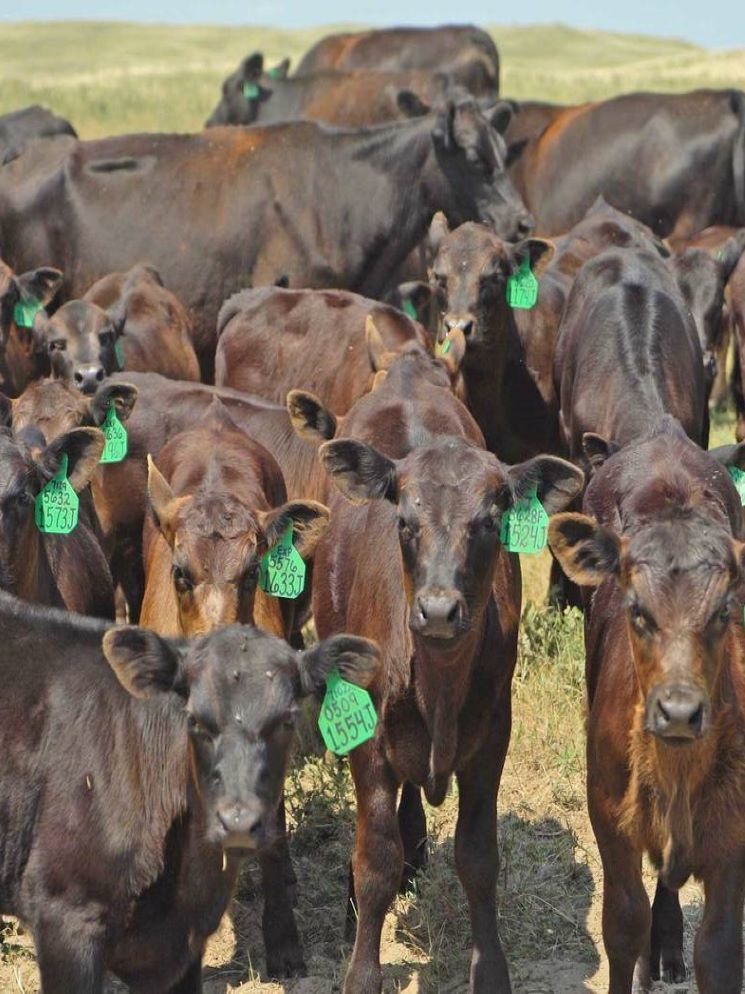
Land and Ranch Broker
Broker Associate and Partner
Mason & Morse Ranch Company
What does Sustainability Mean From a Ranching Perspective?
Sustainability is an often heard “buzzword” in today’s agricultural world. Gaining an understanding of the terminology, benefits and costs as they relate to agriculture is important. Cattle grazing, when managed appropriately, results in conservation benefits and increased ecosystem services. Grazing maintains the health of grasslands, improves soil quality, and preserves open space and wildlife habitat. Additionally, carbon is sequestered in the grasses and soils of grazing lands. Beef production also provides social benefits, sustaining livelihoods and community vibrancy in rural areas.
Ranchers are stewards of some of the best remaining intact grasslands in the country, but they face challenges from an increasingly complex environment. Agricultural policies and new technologies incentivize conversion to cropland, while ranching families face economic pressures and increasingly dynamic weather. Ranching does inherently provide many positives that should be shared, such as the ability to improve soil health, water retention through good grazing management, and providing a quality of life for ranching families, rural communities and through the production of a healthy, nutrient dense food.
Sustainability is about applying an approach to management that considers the economic ramifications of a decision, and then acting in a way that optimizes positive results. Consistent information about economic aspects of rangeland management is necessary to provide a foundation for a business planning approach to family ranching. As ranchers’ endeavor to stay on the land and adapt their business practices to changing markets and demands for various goods and services, collection of monitoring data to track trends in elements elaborated in their individual business plan goals will become increasingly important to the long-term sustainability of their ranch operations. A monitoring approach encompassing economic and ecological aspects of ranch sustainability facilitates adaptive management techniques that incorporate change in response to resource condition and available financial resources.
Spring Valley Ranch & Cattle, located in the Nebraska Sandhills is a great model for Sustainability in the world of cattle ranching. At Spring Valley Ranch & Cattle, all animals are treated in a humane, holistic manner and fed only natural forages raised on the ranch together with natural salts and supplements. At the ranch, management does not till the soil, so there is constant sequestration going on through the growing season as the plants sequester carbon from the environment and release oxygen into the atmosphere. Through its natural grass-fed program, Spring Valley Ranch & Cattle does not use grain-based feeding programs so Spring Valley Ranch & Cattle enhances its sustainability and improves its carbon footprint. The genetic maternal base of the cattle is a smaller more productive animal that is more efficient raising beef from natural ranch raised forage and have improved herd longevity and soundness, both of which improve sustainability. Spring Valley Ranch & Cattle is well balanced meaning its winter and summer feeding needs are equally balanced allowing the ranch to run most efficiently, reducing trucking of hay and cattle and thereby enhancing its sustainability. The ranch has improved its water distribution system with underground pipelines supplying water drinkers over a more uniform distribution area. This provides management with the ability to engage in high density - short duration rotation programs which improve plant and soil health through increased organic matter. The increased organic matter and soil health promote insect production which promotes the natural environmental cycle.
An example of a fully integrated, turnkey operation is now available in Rock County, Nebraska Spring Valley Ranch & Cattle
Managing for multiple economic and ecological goals, such as cattle production, wildlife habitat, recreation and rare plant conservation, can be beneficial to ranchers and communities, increasing income and conservation.
About the Author
Since 1959, John Stratman has lived and worked on ranches in Colorado, Montana and Arizona and has owned and operated a ranch in eastern Colorado raising registered Red Angus seedstock and Quarter Horses. Professionally, John spent 18 years with MetLife’s Agricultural Investment Department, where he held various positions from Field Representative to Regional Manager. In addition to making agriculture real estate loans, investment activities included purchasing, managing and marketing large agriculture properties in several western states. During his corporate career, John lived in various Western states where he became familiar with the agriculture and property. Working as a professional real estate broker since 2001, John has bought and sold farms and ranches in many western states and maintains an extensive contact list with real estate related professionals and landowners across the west’s vast and varied landscape. At Mason & Morse Ranch Company, John has been a top producer. He specializes in large farm and ranch properties in the central and western U.S., which is allowed by his in-depth knowledge of the laws and issues facing farmers and ranchers.